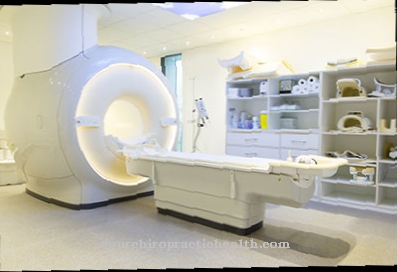Osmometry is a medical and pharmaceutical procedure that determines the osmotic value or pressure of a substance. For example, it can be used to measure plasma osmolality. In order to be able to carry them out, a Osmometer needed.
What is an osmometer?

Osmometry looks back on a long history that is not only related to medicine - because the process is also used in a variety of other areas of application. In 1828 the botanist Henri Dutrochet is said to have documented the first osmometer. Static and dynamic, direct and indirect measurement methods make a range of different methods available today.
An osmometer measures the osmotic value or the osmotic pressure of a substance. In biology, osmosis describes the diffusion of water or other liquids through a semi-permeable membrane.
In the human body, osmotic processes play an important role in numerous processes at the micro and macro level. A disruption of the osmotic equilibrium can, for example, lead to water retention in the tissue (edema) or impair the exchange of molecules between cells and their environment.
Osmometry is a measurement method that is also used in medicine. It uses it, for example, to determine plasma osmolality, which is a property of blood plasma and relates to the number of particles that have an osmotic effect.
Osmometry does not measure osmolality as an absolute value, but rather provides a comparison between the sample that is available for testing and a reference substance such as pure water (H2O). Both substances should have the same temperature, otherwise the measurement results may develop inaccuracies and may not be useful. Once this possible source of error has been eliminated, the only significant factor that has an influence on osmolality is the concentration of osmotically active substances in the sample.
Shapes, types & types
Various methods can be used in osmometry to obtain the measurement results you are looking for. To determine osmolality, osmometers use a reference value with which they compare a certain measurement result of a sample. Different substances can serve as reference; however, osmometers often use pure water that does not contain any additional substances. This means that it has a freezing point of 0 ° C and allows conclusions to be drawn about the comparison sample.
In many cases, medicine and pharmacy use osmometers, which determine osmolality using the method of freezing point osmometry. This is a special procedure that compares the freezing point of the sample with that of water. The freezing point of solutions changes depending on the substances dissolved in them. Salt water solutions or blood samples that have a high salt content only freeze at a significantly lower temperature than pure water.
Structure & functionality
From the outside, typical osmometers are simple boxes that have a measuring point for inserting a sample. In the medical field, such a sample is usually a blood sample, for example to calculate the osmolality of the blood plasma. The measurement takes only a little time and thus allows an economically sensible procedure.
Depending on the technical design of the osmometer, substances of different physical states (solid, liquid or gaseous) can be tested. Some osmometers can be connected to a computer via a USB plug or another connection and thus allow the data to be evaluated quickly and the measurement results to be viewed almost immediately. Serial measurements and measurements with small amounts of test material (e.g. blood samples) are also possible with many devices.
Medical & health benefits
Osmometry can be useful in practically applied medicine as well as in medical research and provide important information about osmotic processes in the human body. For example, it can be used to diagnose plasma osmolality. Plasma osmolality is a characteristic of blood plasma. The property describes how many particles within the blood plasma have an osmotic effect.
Doctors can calculate plasma osmolality using a formula that is usually a rough estimate. To do this, the factor 1.86 is multiplied by the measured sodium value, whereupon the equation adds urea and glucose values. Finally, summand 9 is added. The formula provides an approximate trend in osmolality.
However, a direct measurement of this property of the blood may give more accurate results. For example, the formula does not take into account possible osmotic substances that may be found in the blood. This and other influencing factors result in a so-called osmotic gap, which describes the difference between the calculated (i.e. rather estimated) and actually measured value for osmolality. In healthy people, this osmotic gap is less than the amount of 10.
An osmolality of 275-320 mosmol per kg of body weight is considered normal. If the measured value is well above this normal value, this can indicate an illness. Certain diseases have a characteristic pattern of symptoms that doctors can use to identify them. The correct diagnosis is a prerequisite for the most successful treatment possible.
















.jpg)






.jpg)


.jpg)

